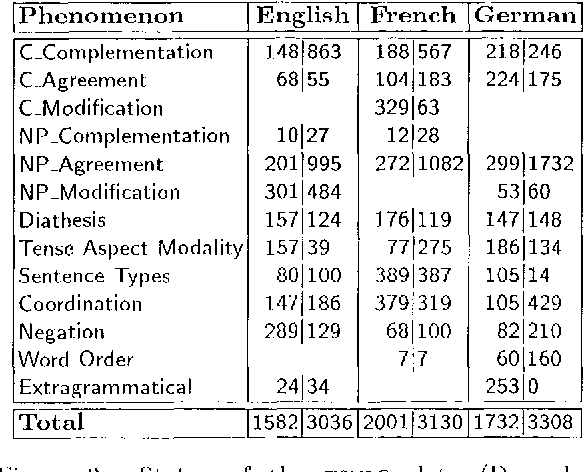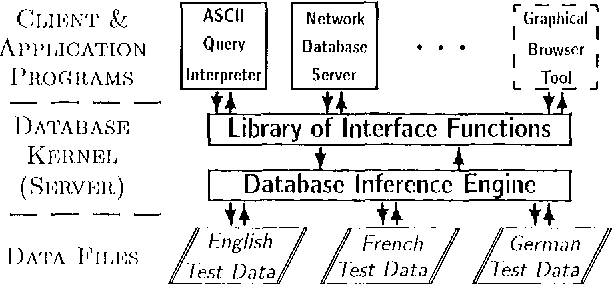Dominique Estival
University of Melbourne
TSNLP - Test Suites for Natural Language Processing
Jul 15, 1996

Abstract:The TSNLP project has investigated various aspects of the construction, maintenance and application of systematic test suites as diagnostic and evaluation tools for NLP applications. The paper summarizes the motivation and main results of the project: besides the solid methodological foundation, TSNLP has produced substantial multi-purpose and multi-user test suites for three European languages together with a set of specialized tools that facilitate the construction, extension, maintenance, retrieval, and customization of the test data. As TSNLP results, including the data and technology, are made publicly available, the project presents a valuable linguistic resourc e that has the potential of providing a wide-spread pre-standard diagnostic and evaluation tool for both developers and users of NLP applications.
A Study of the Context in a Specific Type of Texts: Car Accident Reports
Jun 13, 1995Abstract:This paper addresses the issue of defining context, and more specifically the different contexts needed for understanding a particular type of texts. The corpus chosen is homogeneous and allows us to determine characteristic properties of the texts from which certain inferences can be drawn by the reader. These characteristic properties come from the real world domain (K-context), the type of events the texts describe (F-context) and the genre of the texts (E-context). Together, these three contexts provide elements for the resolution of anaphoric expressions and for several types of disambiguation. We show in particular that the argumentation aspect of these texts is an essential part of the context and explains some of the inferences that can be drawn.
An NLP Approach to a Specific Type of Texts: Car Accident Reports
Feb 23, 1995Abstract:The work reported here is the result of a study done within a larger project on the ``Semantics of Natural Languages'' viewed from the field of Artificial Intelligence and Computational Linguistics. In this project, we have chosen a corpus of insurance claim reports. These texts deal with a relatively circumscribed domain, that of road traffic, thereby limiting the extra-linguistic knowledge necessary to understand them. Moreover, these texts present a number of very specific characteristics, insofar as they are written in a quasi-institutional setting which imposes many constraints on their production. We first determine what these constraints are in order to then show how they provide the writer with the means to create as succint a text as possible, and in a symmetric way, how they provide the reader with the means to interpret the text and to distinguish between its factual and argumentative aspects.
 Add to Chrome
Add to Chrome Add to Firefox
Add to Firefox Add to Edge
Add to Edge